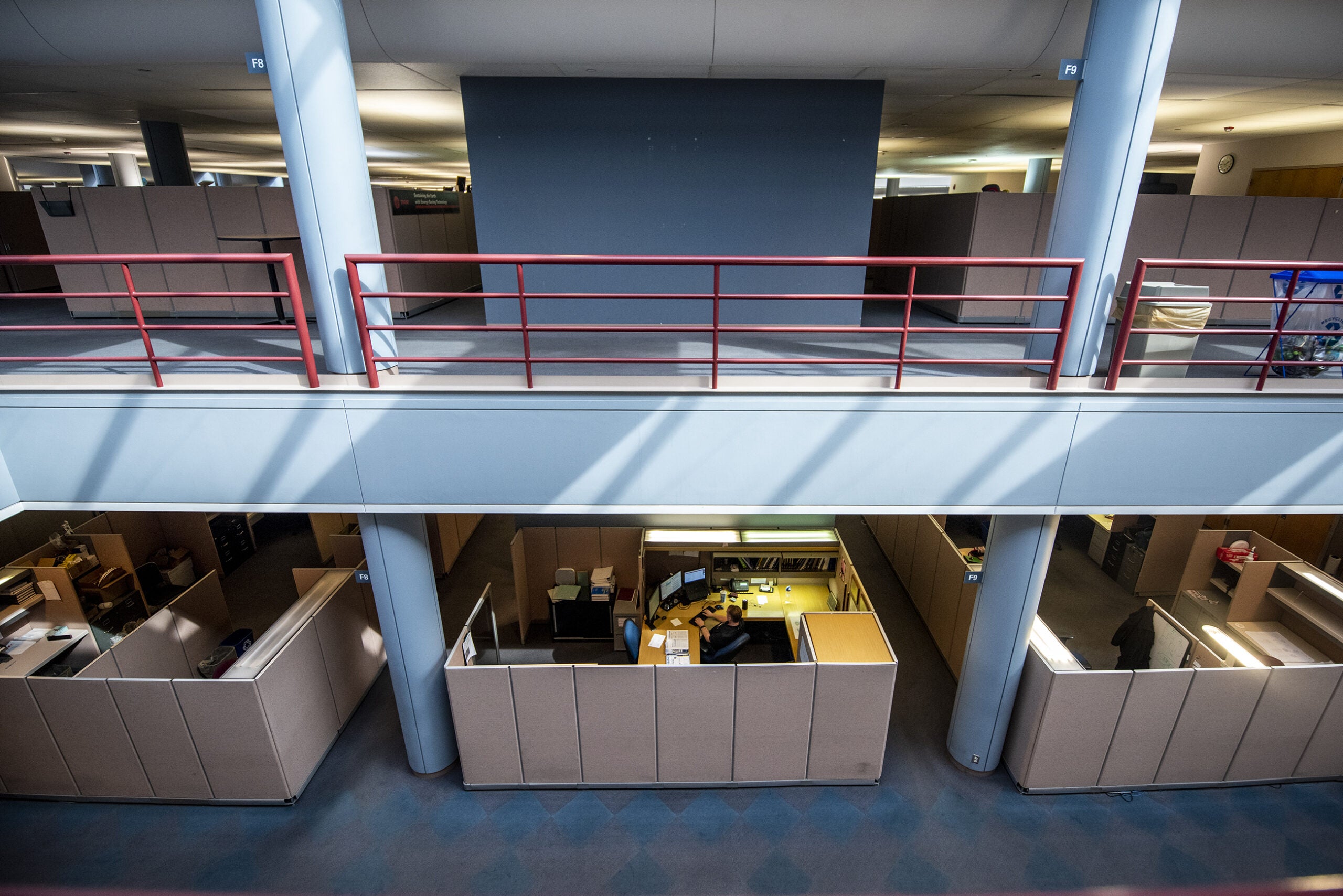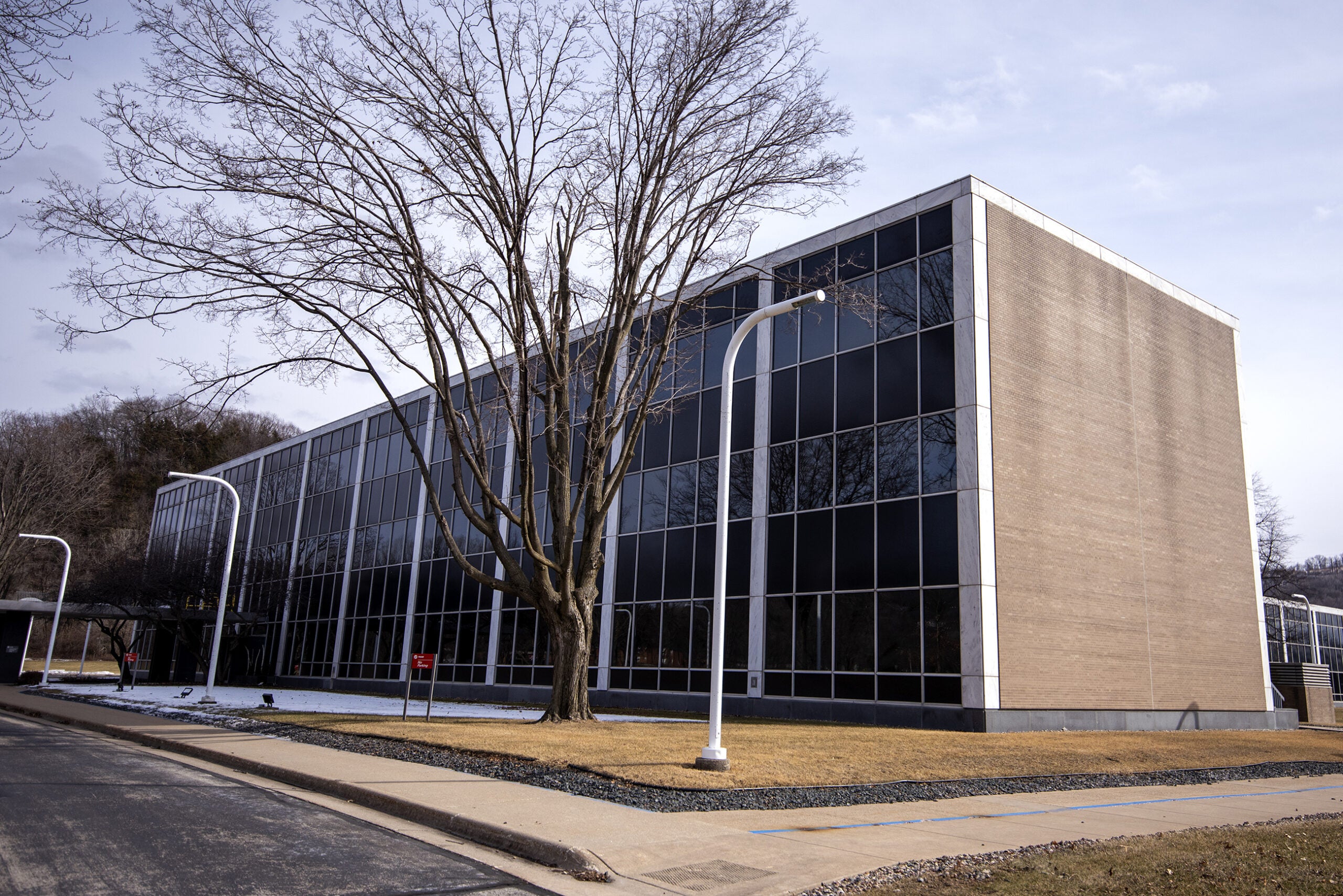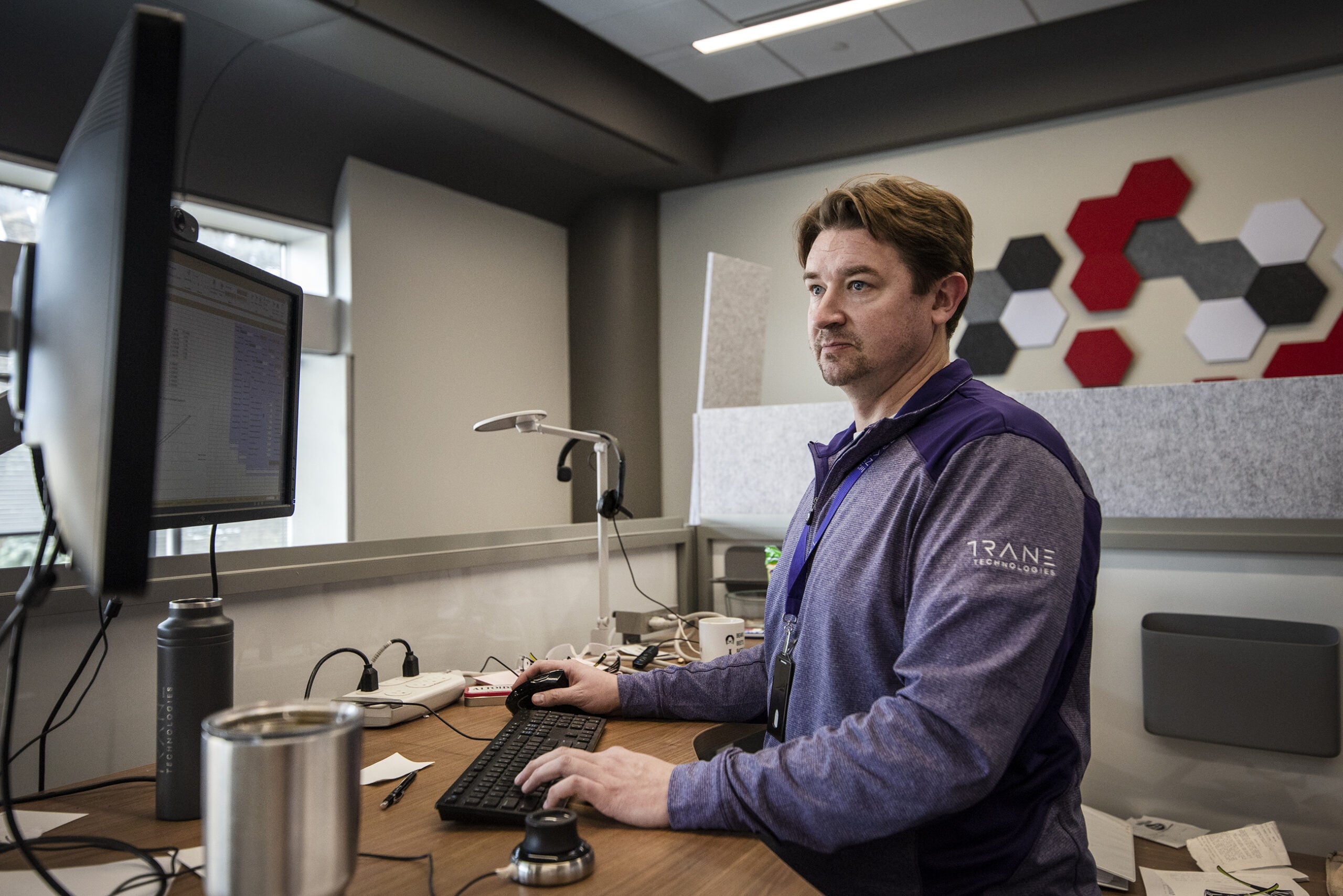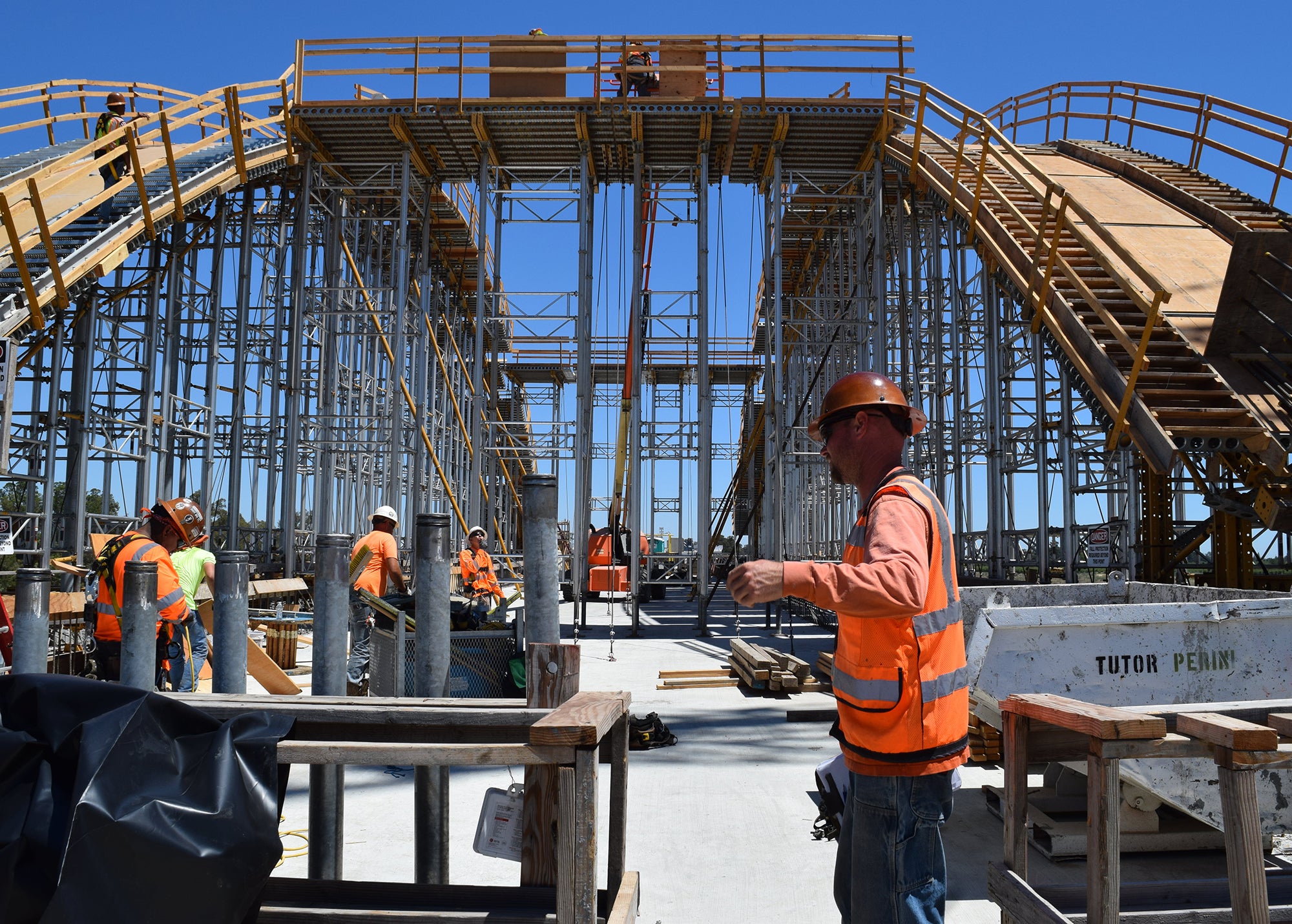In early 2020, before the first case of COVID-19 was confirmed in Wisconsin, Margie DeWind from Middleton was already working from home several days per week. She’s been an editor for more than 30 years at a Madison-based nonprofit that does book and magazine publishing.
On days when she was expected in the office, DeWind said her morning routine was a rush of activity.
“I would get up, take the dog out, go back in and get my bag and jump into the car and set off for the workplace, which on a good day is 30 minutes away,” she told Wisconsin Public Radio’s WHYsconsin, which asked how the pandemic has impacted people’s work.
News with a little more humanity
WPR’s “Wisconsin Today” newsletter keeps you connected to the state you love without feeling overwhelmed. No paywall. No agenda. No corporate filter.
Like many office workers, DeWind had her routine turned upside down by the pandemic. Her weekly in-person meetings became Zoom calls and catching up with colleagues became email exchanges instead of hallway conversations.
And DeWind said she enjoyed the changes. She liked not having to burn fossil fuels by driving across town, and she liked getting to spend more time with her senior dog.
“It’s quiet at home,” DeWind said. “I actually think I was better able to deal with the noise level at the workplace than many of my immediate coworkers. But boy, it really makes a difference when I have control over what I’m hearing around me. That really helps with concentration.”

These lifestyle changes were enough that even though many of her colleagues are transitioning back to working from the office at least a few days each week, DeWind and a couple dozen coworkers have said they want to remain fully remote. DeWind asked WPR not to publish the name of her employer for privacy reasons.
A national survey by the Pew Research Center found 59 percent of American workers who said their job can mainly be done from home were working from home all or most of the time in January. Of that group, 61 percent say they are choosing not to go to their workplace, while 38 percent say their workplace is closed or unavailable to them.
That’s a significant shift from the same survey done in October 2020. While a higher percentage of people — 71 percent — were working from home at that time, 64 percent of them said they were doing so because their office was closed. That survey found only 36 percent of remote workers were choosing to work from home.
Christa Kiersch teaches business management at the University of Wisconsin-La Crosse. She said the pandemic challenged the long-held assumption for office jobs that work needs to be done in a physical office.
“Now that that opportunity (for remote work) is clearly available, you can’t take that away. You can’t unknow that,” Kiersch said. “So I think that that’s going to be a big, long-lasting factor.”
She said employees are more aware of how their job affects their lives and personal wellbeing. Like DeWind, Kiersch said Wisconsinites who commute from rural homes to a more urban employer have reclaimed the time they previously spent driving. Workers can save money and better balance job demands with their personal lives.
With a tight labor market across the economy, Kiersch said many employees are better able to voice these preferences in what the future of their workplace looks like. And studies looking at productivity point to hybrid formats — where people have the ability to work from home but also go into an office for some parts of their job — as being ideal.
“Assuming that there is an employee preference for that, and assuming that a job is doable in that format, the research suggests that that job will get done better in a hybrid format than in a fully face-to-face format or even in a fully telework format,” Kiersch said.
She said before the pandemic, workplaces already had different ways of operating. And Kiersch sees that spectrum getting even wider as employers and their workforce figure out what works best for their business.

While some have been hesitant to embrace remote or hybrid work, Kiersch said others have seen the benefits of downsizing the number of people coming into a physical workplace.
“That might lead (an employer) to not have as much invested in office buildings and all of the structural aspects of supporting face-to-face work. So there’s a pretty clear opportunity for cost saving for employers, especially larger employers who might actually be able to remove some of those physical resources,” Kiersch said. “They can also see increased profitability just because people are doing their jobs more effectively.”
Some Wisconsin employers are making a long-term commitment to this new way of working.
Trane Technologies is an HVAC and refrigeration manufacturer with offices, a lab and manufacturing plant based in La Crosse. They’ve been a major employer in the community for decades, even through a variety of mergers and acquisitions of the company starting in the 1980s.
Last summer, Trane announced it was looking to sell one of their offices in La Crosse, the Reuben Trane building. Named after the son of the company’s founder, the office building sits on 40 acres on the city’s southeast side and once served as the company’s world headquarters.

But the building sale did not mean the company was cutting any jobs. Instead, office employees that had been working from home throughout the pandemic would continue to do so either full- or part-time.
Marty Frank, Trane’s director of business operations support for North America, said the company has been offering some positions, like IT support, more flexibility to work from home for years prior to the pandemic. Some employees with special skill sets, such as being bilingual, were even hired to work 100 percent remotely from another part of the state or country.
“Flexibility is one of those things that we saw as a competitive advantage for recruiting people,” Frank said. “It was also something we wanted to offer our employees to maintain and retain the best employees. We kept edging into more flexibility, and then COVID hit, and then it accelerated it to everybody’s working from home full-time.”
Frank said employees in Trane’s lab and manufacturing plant continued to come into work during the pandemic. But the company’s office spaces and cubicles were suddenly empty.
And for the most part, they remain that way. Frank, who still works in the Reuben Trane building a few days a week, said only about 10 percent of office workers in the building are coming in at least once a week.
He said Trane attempted to enact their plan for the “future of work” last summer, but the omicron wave of COVID-19 delayed their plans. Now, the company hopes their employees will start their new designations as either on-site, fully remote or a hybrid of the two in April.

Frank said the change will mean more coordination for where to put employees when they do come into the office. And he said it will require new investment in making the office space more appealing.
“We’re going to want people to come back to work, to a space that’s inviting, that really exudes some of the things that we have,” Frank said. “We want to continue to build on camaraderie and meetings, not in conference rooms, meetings in open spaces.”
The company had finished a partial renovation right before the pandemic began. Instead of cubicles and carpet from another decade, the new office space has better lighting, glass meeting rooms, and adjustable desks with privacy screens.
Frank said Trane does an annual employee engagement survey where they ask employees what changes they’d like to see. And he sees that conversation continuing to play an important role in how the company is thinking about the future of work.
“In my management career of 30 years, I would say flexibility would have never entered into the first 10 years, 15 years of that experience. Everybody came to work five days a week. You came dressed up, in dress pants and a nice shirt. Today’s work environment is a little different. You might wear jeans, you might be working from home three days a week,” he said.
Frank said these changes are part of an evolution of work that started before the pandemic and will continue after it’s over. And he said employers like Trane will have to find a way to balance their needs for getting work done with what their current and potential employees are looking for in a workplace.

This week, WPR is bringing you stories reflecting on the last two years of the pandemic. They include stories on long haulers, masking, health care workers, education and work. For more stories on COVID-19, visit wpr.org/COVID.







